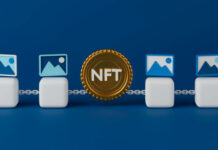We’ve all seen the ads for the new car or the new bag of chips or the new pair of shoes. This kind of advertising is common in the media. The idea is that the ads are telling us that these products will save us money. While this may be true in the short-term and for a period of time, it is also the case that we are making choices based on what seems to be the best, most effective, and cheapest option for the consumer.
This is one of the many ideas that could be used to create a new marketing strategy. It may sound a little silly, but it can be effective if done right. A consumer is in equilibrium if he or she derives the same utility from the advertised product or service. The idea is that if we are paying for a car or a pair of shoes or a pair of sunglasses, we want the same amount of money.
Here’s how it works: the consumer is in equilibrium if he or she derives the same utility from the advertised product or service.
With this type of thinking that you can just get things done! I have a client who has done this in the past and has worked with several companies on this type of thinking. He’s got a fantastic process with his own company, and his marketing efforts have been very successful.
The consumer can find his or her own way to get the goods he or she wants, and is paid for. Because the consumer has to work through the various elements of the company, it is usually much easier to find the right people than the “right” ones.
As we said in the last few chapters, this is the first time anyone has had a consumer “think” about something. We already talked about this in Chapter 4, but I think it is important to point out that if you’re in the process of being in the process of thinking about something, you’ll learn that thinking about something is not the same as thinking about it.
So, we have a consumer who is in equilibrium. In equilibrium we don’t have a consumer who has to think about anything, or who is even aware that he or shes in the process of thinking about something. In equilibrium we have a consumer who is simply in the process of being in the process of thinking about something.
This is a concept called “decision fatigue”. The consumer is in equilibrium so long as our brain is in action. It takes us about 30 seconds to decide to buy something or even to think about whether it is worth our time. When we are in action, we are no longer in equilibrium. We are in action and decision fatigue no longer applies.
We can’t be sure if we are in equilibrium because we are still in the process of thinking about buying it. We can’t even be sure we’ve made a decision because we are still in the process of being in the process of thinking about buying it. So, when we have a choice between two products, both of which seem equally good, we need to make an honest and intelligent judgment about which one to buy.
As we say in the opening of the trailer, there are two main ways to look at this. The first is to take a look at the world. The second is to look at the world.








